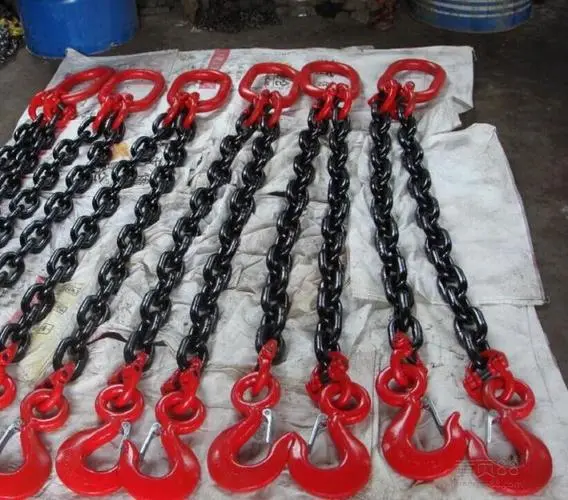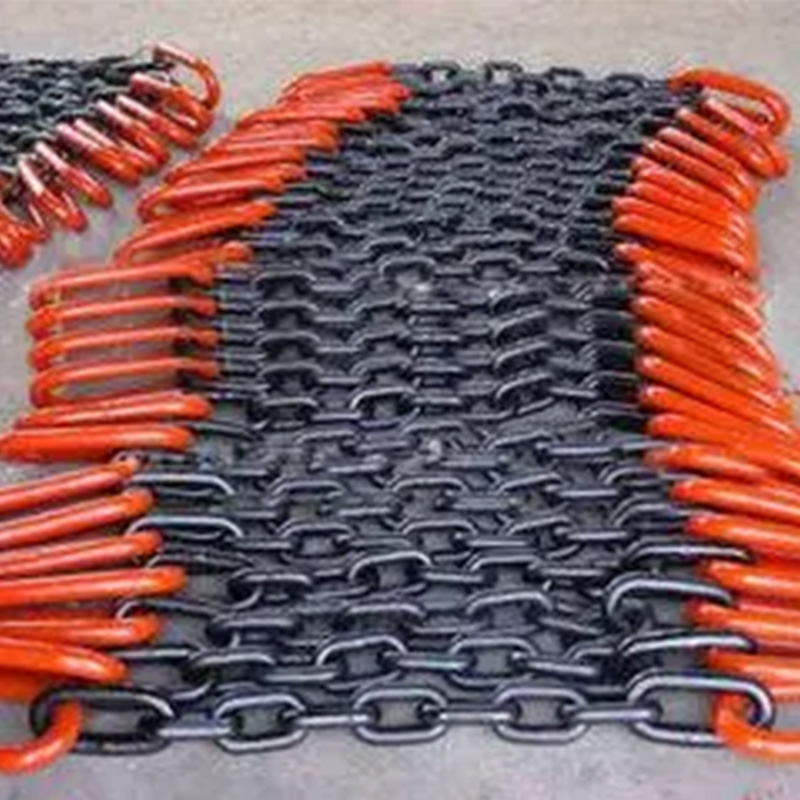Our staff will contact you within 12 hours, You can also contact us through the following ways:
Contact US WhatsApp: +8618766656705
- Email: [email protected]
- Tel: +8618766656705
- Web: https://www.toponechain.com/
Loads twist, angles drift, and routes change, so you need a method that keeps control visible. This guide treats chain slings for lifting—welded round-link slings—as one rated path from crane hook to load. You will map the job, pick the right architecture, match grades and fittings, manage geometry with numbers, and run short inspections that crews finish every shift. Follow it and you will lift cleanly, trim fast, and document proof your auditors accept.


You use welded round-link chain because it tolerates abrasion, fits compact hardware, and shortens predictably with rated pockets. The sling tag lists Working Load Limits (WLL) by hitch and angle, while links show grade and size stamps. Hooks, shackles, master links, and shorteners carry their own WLL marks. You keep one rating language across the whole path and you let the lowest WLL govern capacity.
Pick layout for geometry and control, not habit:
Single-leg handles vertical picks into one rated lug or padeye.
Two-leg spans balanced points and levels quickly with head-mounted shorteners.
Three-leg adds stability on irregular faces where symmetry disappears.
Four-leg controls pitch and roll on frames or skids; plan conservatively as if three legs carry while the fourth stabilizes.
If headroom squeezes angles shut, add a spreader rather than forcing the rig to behave.
Seat a lifting chain master link that clears the crane hook latch and centers in the bowl during bumps and stops. Match the sub-assembly to the leg count and chain diameter. After the head fits, choose chain grade and fittings that match the site.
Grade 80 alloy works hard in shops and yards where sparks and abrasion live.
Grade 100 alloy boosts WLL for the same diameter, so you keep angles friendlier when headroom stays tight.
Stainless 304/316 resists washdown and splash; match stainless hooks and shackles to curb galvanic pairs.
Zinc–nickel coated alloy sheds coastal salt; rinse after splash and oil pivots lightly.
Whatever you select, you still read the tag and stamps, and you still photograph marks for the job file.
Hitch | Best for | Key checks | Field tip |
Vertical | Rated lugs, straight picks | Tag’s vertical WLL; hook bowl seating | Keep leg straight; avoid tip loading |
Choker | Slender shapes that try to roll | Guard at choke; clean seating | Use a softener; re-check after test bump |
Basket | Rounded drums, pipe, beams with guards | Two near-vertical legs; bend radius | Keep legs equal; measure the angle |
Confirm exact WLL values on the sling tag before any lift.
Self-locking hooks keep closures shut during long travel, wind, or pauses; seat the load deep in the bowl.
Spring-latch sling hooks connect fast in sheltered spaces; cycle latches before every pick.
Grab/shortening hooks or shortening clutches mount at the head; capture one full link centered in each pocket—never a half link.
Bow shackles bridge padeyes and odd geometries; run the pin through the hardware and face the bow toward the legs so the pin carries pure shear.
In-line swivels allow rotation only when the force stays straight; a swivel never cures misalignment
1. Lay out the sling; roll links until grade and size stamps face up; clear twists.
2. Inspect master link, sub-links, shorteners, hooks, shackles, and any swivel; replace scarred or cracked parts.
3. Seat the head in the crane hook; confirm latch clearance and free swing.
4. Connect at the load; align eyes to the line of pull; seat hooks in the bowl.
5. Fit corner guards wherever chain meets a radius or plate edge.
6. Snug and measure angles on both faces with a card or inclinometer.
7. Trim opposite legs at the head; re-measure after each step.
8. Test-bump 100–150 mm; pause; re-check angles, latch closure, and pin security; only then travel.
Keep checks simple so crews finish them every shift:
Tag & traceability: read grade, size, WLL by hitch and angle, serial/batch, maker ID.
Elongation: measure five consecutive links under light tension; retire legs at the maker’s limit.
Crown wear: gauge link diameter; compare to the published wear threshold.
Shortener pockets: faces flat, no peening or sidewall cracks; full-link capture only.
Hooks & latches: cycle ten times; verify throat opening; reject cracks at saddle or neck.
Shackles: check pin straightness and threads; prefer bolt-type pins for vibration and fit cotters.
Swivels: confirm smooth axial rotation; remove units with side-load scars.
Records: photograph stamps and the tag; store proof-test sheets that match the sling serial.
One leg stays slack after snugging. Shorten its diagonal partner one step; re-bump and re-read angles.
Head chatters in the crane hook. Upsize the master link or fit the correct sub-assembly so the latch closes freely.
Hook chatters during stops. Switch to self-locking hooks and keep the load deep in the bowl.
Twist builds on long travel. Reopen angles with a spreader; add an in-line swivel only if the force stays straight.
Scars at corners. Install guards and reroute to a true line of pull.
You shoot three photos at receiving: the sling tag, a link grade stamp, and each WLL mark on hooks, shackles, master link, and shorteners. You add five-link pitch and crown-diameter values to the sheet. Then you reuse the same checklist for periodic inspections so records stay consistent and fast to audit.
Read stamps, fit the head, set angles with tools, trim at the head, guard every edge, and log photo-rich inspections, and your chain slings for lifting will deliver clean, predictable picks shift after shift—contact TOPONE CHAIN today for certified round-link chain slings and matched hardware for your next job.